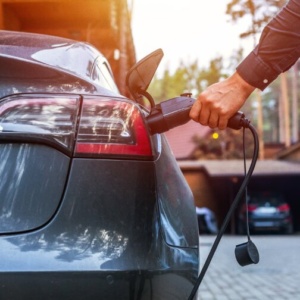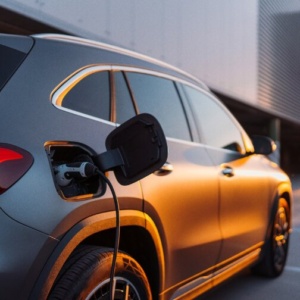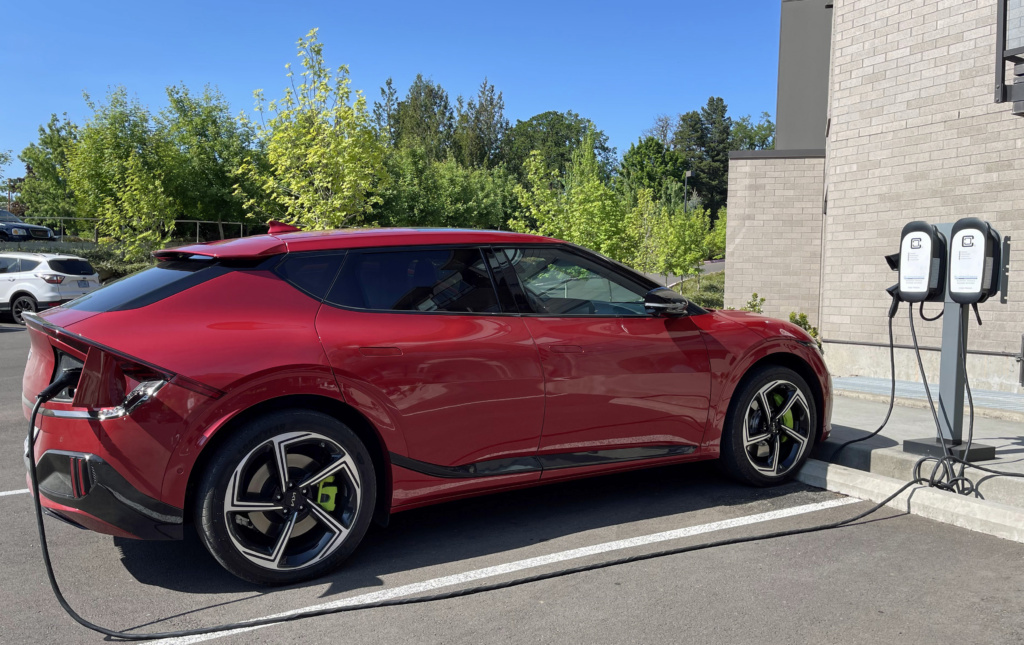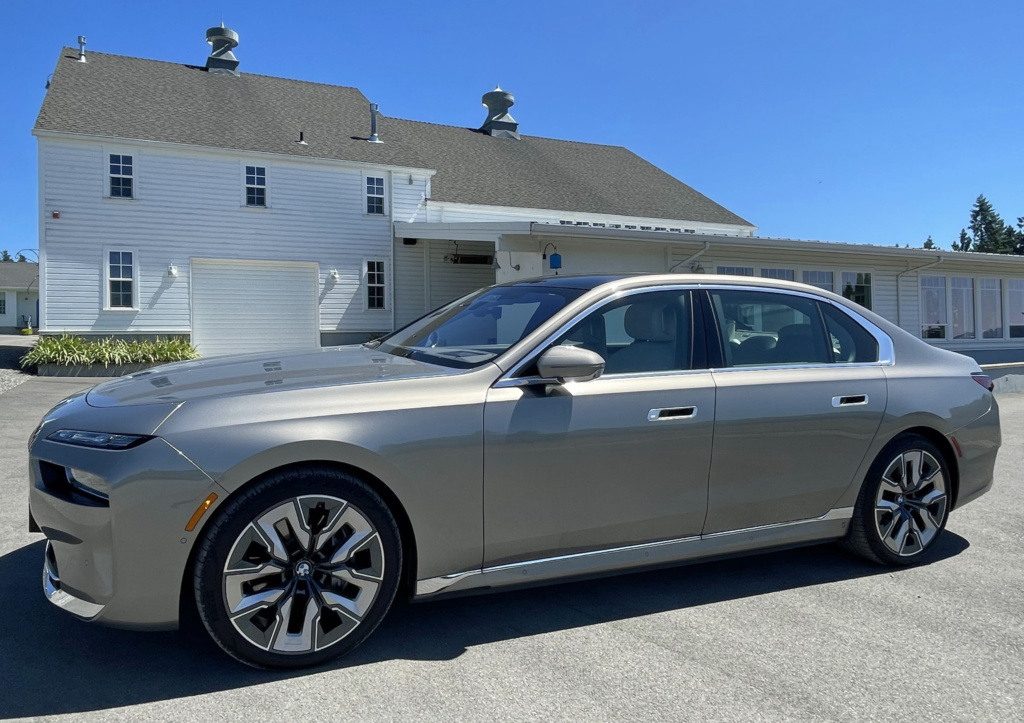Written by Abby Jones
PORTLAND, ORE – More and more drivers are interested in electric vehicles, and some are ‘taking one for a spin’ while on vacation, thanks to them being readily available as rental cars. AAA’s rental car partner Hertz has been investing heavily in electric vehicles for its fleet with purchases from Tesla, Polestar, and GM. The company now has tens of thousands of EVs for rent at more than 1,600 locations in 44 states. Hertz hopes to provide nearly two million EV rentals by the end of this year-about five times the number of EV rentals it did in 2022.
Inspired in part by record breaking gas prices, consumers purchased more than 760,000 EVs in 2022, a 65% increase from 2021. Drivers regularly say that cost, range anxiety and availability of charging stations are some of their biggest concerns they have about giving up their traditional internal combustion vehicle for an EV.
A AAA survey released in 2020 found that driving an EV was the best way to alleviate concerns about them. Of the EV owners surveyed: 77% said they were less or no longer concerned about range after buying an EV. 96% said they would buy or lease another electric vehicle the next time they were in the market for a new car.
If you are itching to see for yourself what all the commotion is about, you can rent one with ease. AAA members receive up to 20% off the base rate when booking an EV with Hertz.
Perks of Electric Vehicles:
- Saves you money on gas – spend 60% less on fuel costs each year.
- Better for the environment.
- Outperforms many gas counterparts.
Things for First Time EV Drivers to Consider:
Understand the Driving Range:
The rental car agent should explain to you how far you can expect to go on a charge and how that changes depending on how many passengers you have and how much luggage and gear you are taking with you. It’s very important for drivers to pay close attention to the charge they have and to know how far they have to go to find a place to re-charge the vehicle.
As many areas have seen some extreme heat here recently, a reminder that running the AC at full blast decreases an EVs range.


Finding and Booking a Charging Spot:
Charging up an EV is very different than filling up a traditional vehicle. Researching charging locations and how to pay to charge a vehicle are important things to do before you rent. Some states and regions have many more charging opportunities than others. According to the U.S. Department of Energy, there are 142,342 charging ports at nearly 55,000 charging stations across the country. California leads the way on EV charging with nearly 15,000 charging stations and more than 40,000 outlets.
In comparison, Oregon has around 2,600 charging outlets and Idaho has only 317 charging outlets. Charging ports are sparse in the rural areas of Idaho and Eastern Oregon, making road trips through those areas tough. Be sure to plan ahead and map out where you will stop to fill up. A tip to maximize efficiency is to plan your meals around when your car will need charge and eat while it’s plugged in!
In Oregon, I-5, highway 97, and I-84 are all main roads with plenty of charging points to get you across the state. Idaho charging spots are lacking in some portions of the state, but traveling on I-84, I-90, and I-15 should not be an issue, as there are public ports sprinkled across the highways. If your plans take you to remote locations, it’s important to make sure there are ample and available charging stations nearby. Making sure you’re covered for charging may change your route and your stops along the way.
Charging stations can be easily found via your phone in many public places, such as parking garages and shopping malls and some even offer free charging. Hertz has also installed more than 2,700 chargers at it’s locations to be able to charge the electric vehicles in its fleet. Some areas are much better equipped to handle EVs than others.
Along with showing gas stations and current gas prices, the AAA app can also help you find charging stations near you and along your route. And if you are in the Portland area, AAA offers a roadside EV charging vehicle to come to the rescue if you run out of juice!
Other things to know before driving an EV
- Acceleration: Since electricity powers the engine instead of fuel, acceleration is immediate and smooth as opposed to more gradual acceleration with a gas-powered engine.
- Range: It’s important to consider an electric car’s range before your next road trip. Different models come with different ranges and choosing one that meets your needs is essential. If you’re taking a long road trip, you should consider a model with a more extended range. Some models even come with features that increase the range of your vehicle. Most electric cars can drive up to 300 miles on a full charge.
- Insurance: Check with your insurance provider to make sure you have the coverage required to rent an EV
- The drive: Expect a different driving experience and know there will be a learning curve.
- Charging: Check the charging infrastructure of where you are renting. Do you need to bring an extra charging cable with you to charge portably? Research the availability of local charging points

AAA First Time EV Driver Point of View (POV)
AAA conducted a focus group to better understand first-time drivers’ experience in an EV. Respondents reported “driving years” from 13 to 45 years, with an average of 32.2 years behind the wheel. AAA researchers rented two popular EV models.
Through their POV, study participants identified that you must consider these CARBs before/while driving an EV.
Charge: The battery’s charge is essential for the vehicle’s operation, and maintaining a full charge is crucial. To charge an EV, it must be connected to a charging station, which provides the necessary power source. You can charge at home with an outlet and a cable, or in public at public charging stations located in select parking lots.
Acceleration: EVs are generally faster than their gas-powered counterparts. EVs need less time for energy to make it to the wheels compared to gasoline cars, which need time for fuel and air to burn and expand in the engine. Acceleration can launce the vehicle quicker than gas cars, so start slowly and gently on the pedal.
Ride: EVs don’t emit any engine or exhaust noise, which makes them much quieter than their gas counterparts. A slight sound from their tires and mild wind noise makes these EVs quiet to drive. Handling of the vehicle can be appreciated more because of the low center of gravity, making the EV easier to turn at reasonable speeds. Inside the EV, the vehicle user interface dashboard incorporates modern technology and influences how users interact with EVs.
Brake: In a gas-powered vehicle, the brake pads create friction to slow the wheels’ movement. The friction turns some of the kinetic energy of wheel rotation into heat and slows the vehicle.
In an EV, instead of coasting, the system automatically uses the electric drivetrain and (depending on settings) can cause the car to slow down without the brake pedal engaged. This is called Regenerative Braking. The EV captures the energy released during the braking process and uses it to recharge its battery. This makes EVs more efficient and helps to extend their overall range. A “jarring” feeling often kicks in the moment the driver takes their foot off the acceleration pedal.


